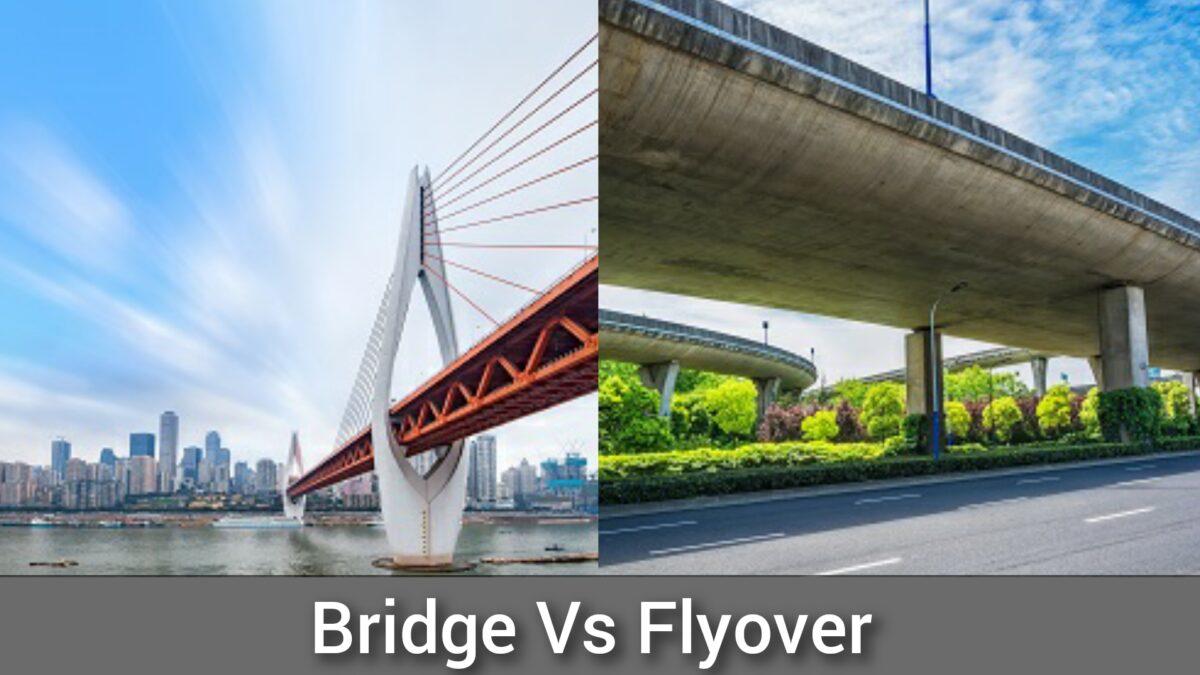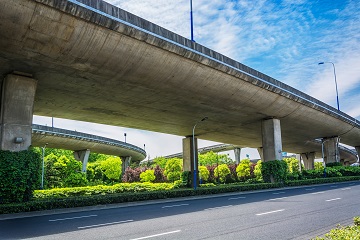Bridge and Flyover can be differentiated based upon their function, purpose of usage, and the location where it is constructed.

Table of Contents
Bridge Vs Flyover: Differences
Differences between bridge and flyover is described in the table as given below:
| Bridge | Flyover |
|---|---|
| Bridges are constructed to divert the traffic across the obstruction. The other purpose is to navigate pipelines and other forms of transport. | They are made for road vehicles. |
| It is made to connect the two different points. | It is built over the road. |
| The bridge can be constructed over rivers, canals, roads, etc. | It is always built over the roads as an overpass. |
| The bridge works as a bypass and does not reduce road traffic. | It is used to reduce traffic volume. |
| It can be built over natural structures such as hills. | It is always built over man-made structures such as roads. |
| It is usually constructed over the river, valley, etc. | It is constructed in those areas where the roads are congested. |
What Is Bridge:
- The drainage structure which serves as a communication path for carrying a road or railway traffic across an obstruction or depression with or without water is known as the bridge.
- A bridge is a structure that is built over natural obstructions such as rivers, valleys to link two locations separated by these obstructions.
- Bridges are further categorized on the basis of their purpose, lifespan, materials, span, etc.
- Bridges are utilized for navigating traffic across the obstruction, navigating pipelines, and other forms of transport.

What Is Flyover?
- A flyover is an overpass, a high-level road bridge that crosses over a highway interchange or intersection.
- It is a structure that joins two or more points which are divided by convenient routes or a man-made structure to cut the traffic for a faster mode of travel.
- They are normally made over road junctions, roads, streets, etc.
- The name itself indicates that you are flying over a traffic zone.
- They are normally built for road vehicles.

Advantages Of Bridge
- Bridges connect two separated places, making it easy to move people, goods, and services.
- Bridges improve transportation infrastructure, making it easier to travel between cities, towns, and rural areas.
- Bridges contribute to economic growth by improving access to markets and increasing the mobility of goods, which boosts economic activity.
- Bridges reduce travel time between two points, allowing people to reach their destinations more quickly and efficiently.
- Bridges provide a safe and convenient way to cross rivers, valleys, and other obstacles, reducing the risk of accidents and injuries.
- Bridges can be designed to be aesthetically pleasing, enhancing the visual appeal of a location and providing a sense of pride and identity.
- Bridges can reduce the environmental impact of transportation by reducing congestion and emissions.
- Bridges are flexible in terms of their design and can be adapted to different conditions, such as varying water levels, terrain, and traffic volumes.
- Bridges can be designed to last for many years, providing a long-lasting solution for transportation needs.
Advantages Of Flyover
- Flyovers reduce travel time by providing a direct route over congested areas.
- They help ease traffic congestion by diverting traffic flow to a higher level.
- Flyovers improve road safety by separating vehicular and pedestrian traffic.
- They enhance the overall aesthetics of the surrounding area by reducing the need for ground-level infrastructure.
- Flyovers provide an efficient means of transportation for emergency services like ambulances and fire trucks.
- They reduce noise pollution by elevating traffic above ground level.
- Flyovers can increase property values by improving access to commercial areas and reducing traffic congestion.
- They offer a reliable alternative route during road closures or maintenance work.
- Flyovers promote economic development by improving access to important commercial and industrial areas.
- They improve the overall efficiency of transportation systems by reducing travel times and increasing traffic flow.
